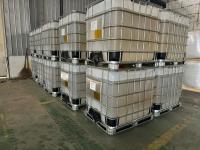Polyamine plays important roles in water treatment and mineral processing due to its unique chemical properties. Here are its main functions in these two fields:
-
Coagulation and Flocculation: Polyamine is a kind of cationic polymer. In water treatment, it can neutralize the negative charges on the surface of suspended particles in water. Most of the fine particles in water, such as clay, silt, and some organic matter, carry negative charges. Due to the electrostatic repulsion between these negatively charged particles, they are difficult to aggregate and settle. Polyamine, with its positively charged groups, can adsorb onto the surface of these particles, reducing the electrostatic repulsion and causing the particles to come closer together. This process is called coagulation. After that, polyamine can further form bridges between the coagulated particles, making them form larger flocs. These large flocs are easier to settle or be filtered out, thereby achieving the purpose of clarifying water. For example, in the treatment of surface water with high turbidity, polyamine can effectively remove the suspended solids, improving the water quality.
-
Removal of Organic Matter: Polyamine can also interact with organic matter in water. Some organic substances, such as humic acid and fulvic acid, which are commonly found in natural water, can cause color, odor, and other problems in water. Polyamine can adsorb these organic substances through electrostatic interaction and hydrogen bonding, and then remove them from water together with the flocs formed. This helps to reduce the content of organic matter in water, improve the clarity and odor of water, and also reduce the potential risk of harmful by - products formed by the reaction of organic matter with disinfectants in the subsequent water treatment process.
-
Disinfection and Microorganism Control: To some extent, polyamine can also play a role in disinfection and microorganism control. The cationic nature of polyamine allows it to interact with the negatively charged cell walls of microorganisms. This interaction can disrupt the cell membrane structure of microorganisms, leading to the leakage of intracellular substances and ultimately the death of microorganisms. Although its disinfection effect is not as strong as that of traditional disinfectants such as chlorine and ozone, it can still help to reduce the number of microorganisms in water, especially in combination with other water treatment processes.
-
Flotation Collector: In mineral flotation, polyamine can be used as a collector. Minerals have different surface properties, and some minerals need to be made hydrophobic to be effectively floated. Polyamine can adsorb onto the surface of target minerals through chemical adsorption and electrostatic interaction. It changes the surface wettability of minerals, making them hydrophobic. For example, in the flotation of some oxide minerals, polyamine can form a hydrophobic film on the mineral surface, so that the mineral particles can adhere to the air bubbles and be floated to the surface, while the gangue minerals remain in the pulp, thus achieving the separation of valuable minerals from gangue minerals.
-
Dispersant and Depressant: In some cases, polyamine can also be used as a dispersant or depressant. When it is necessary to prevent the aggregation of certain minerals or to inhibit the flotation of some gangue minerals, polyamine can be added. As a dispersant, it can adsorb onto the surface of mineral particles, increasing the electrostatic repulsion between particles and keeping them in a dispersed state. As a depressant, it can selectively adsorb onto the surface of gangue minerals, increasing their hydrophilicity and preventing them from being floated, while allowing the valuable minerals to be floated normally. This helps to improve the selectivity and efficiency of mineral flotation.
-
Slurry Conditioning: In the mineral processing process, the properties of the slurry have a significant impact on the separation effect. Polyamine can be used to condition the slurry. It can adjust the pH value of the slurry, change the surface charge of the mineral particles, and improve the fluidity and stability of the slurry. This is beneficial to the smooth progress of subsequent mineral processing operations, such as grinding, flotation, and filtration. For example, in the processing of some fine - grained ores, polyamine can be used to improve the settling and filtration properties of the slurry, reducing the energy consumption and improving the production efficiency.




